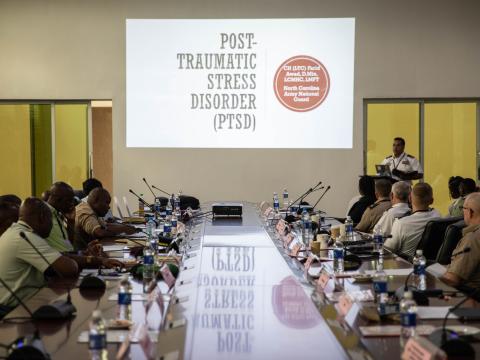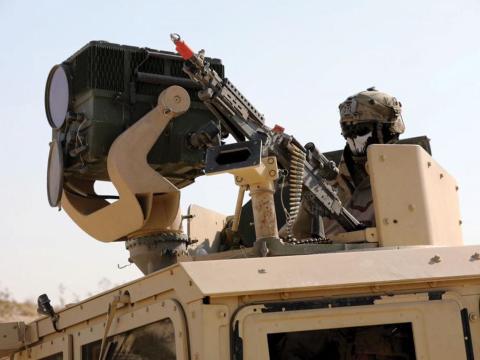The Front Line Is Less Clear On a 360-Degree Battlefield
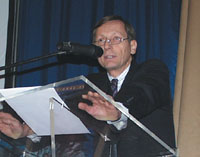
Vice Adm. Richard Wilmot-Roussel, FRN, French representative to the Military Committee of the European Union, says the threats to the European Union are similar to those of most democracies.
Battlespace digitization was the focus of a number of leading experts as they debated the reality and trends evolving from this concept. The discussions were part of a recent international symposium in Paris presented by the AFCEA Paris Chapter and conducted under the patronage of the French Minister of Defense.
Using U.S. Secretary of Defense Donald Rumsfeld’s view that the mission defines the coalition, François Heisbourg, director of the Foundation for Strategic Research, Paris, reviewed the geopolitical environment. According to Heisbourg, it is unlikely that all 26 NATO nations would be simultaneously involved in an operation. Force projection, he suggested, is the most likely function of any coalition between the United States and selected European Union nations. He emphasized the importance of forces being “system heavy/platform light” but said that, in reality, it is more likely to be the other way around. He examined homeland security, noting that it involves protecting millions of people of one nation who need more protection at the local level than at the national level.
Western nationals have an ambivalent view of the Middle East, Heisbourg added, and their view is confused by their dependence on that region’s energy resources. European nations, he offered, will take on a greater international policing role as China emerges as a potential rival to the United States. He said European nations must assume greater responsibility for military research and development activity, noting that for fiscal year 2005, U.S. research and development expenditures were almost equivalent to its procurement funding. In Europe, research and development expenditures account for only approximately 5 percent of defense spending.
High-intensity U.S. operations in Iraq have given the European Union a new model against which to compare its armed force, explained Marc Perrin de Brichambaut, director of Strategic Affairs in the French Ministry of Defense. Focusing on command, control, consultation and intelligence (C3I), he said a need exists to balance spending between platforms and information technology, noting that he watched with interest as the United Kingdom reduced platform spending to enhance its systems’ capability budgets. He said he saw satellite communications as crucial but expensive in operations and suggested asset sharing.
In today’s operations, the front line has been replaced by a 360-degree battlespace, explained Brig. Gen. M. Ludwigs, GEA, the national vice chairman of the NATO Consultation, Command and Control Agency (NC3A) Board of Directors. He provided a high-level view of NATO’s approach to a network-enabled capability (NEC). Information superiority and NEC are essential elements for the agile forces that are necessary to execute coalition operations. From the vantage point of NATO headquarters, he said, more coordination between nations’ NEC development is needed. Gen. Ludwigs reported that a 12-nation NATO NEC (NNEC) feasibility study will be published in the middle of 2005. NNEC is indispensable, according to Gen. Ludwigs, and he welcomes the establishment of a Network-Centric Operations Industrial Consortium to assist in future development.
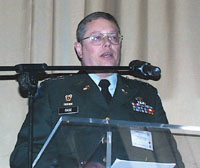 |
| Col. Mike Case, USA, Headquarters 5th Signal Command, shares his perspective on battlespace digitization. |
Lt. Col. Mike Griffith, British Army, said the United Kingdom is looking at three NEC time frames: the end of 2004 for an initial state of interconnection, 2015 for full integration and 2025 for full synchronization. Col. Griffith quoted the U.K. chief of general staff, saying that the national view is that the United Kingdom wishes to fight with the United States, not as the United States. This leaves the door wide open for national acquisition plans and time scales. Col. Griffith said he would like to see a better relationship with industry with more emphasis on compliance, transparency and collaboration.
Vice Adm. Richard Wilmot-Roussel, FRN, related that, initially, European defense policy centered on a requirement to deploy 60,000 people in 60 days for one year, but this quantitative approach is giving way to a more qualitative view being developed in a European Capability Action Plan. The threats to European Union security are similar to those of most democracies—terrorism, weapons of mass destruction, regional conflicts, rogue states and organized crime. The front line of defense will often be abroad, and the nations on the European Union’s borders need to be well governed, but defending international law, he said, needs a U.N. charter. Headline goals are being drawn up for 2010 with qualitative requirements that include availability, deployability and interoperability. From January 2005, battle groups are planned to give the European Union a rapid reaction force of 1,500 troops in less than 10 days.
 |
| In a panel conducted by Dag Wilhelmsen, the industry view of transformation is discussed by corporate executives (l to r) Peter Collins, BAE Systems; Marc Darmon, Thales; AFCEA Paris Chapter President Claude Roche, EADS; Wilhelmsen; Lennar Kallqvist, SAAB; and Rear Adm. Xavier Païtard. FRN, representing Allied Command Transformation. |
Meeting in plenary session, Dag Wilhelmsen, general manager of the NC3A, briefed on his organization’s role to meet the demands of command, control, consultation, computers, intelligence, surveillance and reconnaissance (C4ISR). Wilhelmsen covered a number of NC3A projects, but he emphasized the need to standardize the interfaces without dictating the system solutions. The NC3A is committed to providing time-sensitive information in support of the NATO Reaction Force.
Rear Adm. Xavier Païtard, FRN, the head of future capabilities, research and technology at Allied Command Transformation, started off the event’s second day with the observation that the future battlespace will be influenced by the information age in which we live. Political, civil, economic and military efforts must be coordinated, and to assist this, the NNEC vision is to permit superiority in all aspects of warfare by the better sharing of information and mutual understanding. An international staff NNEC integrated policy team is looking at experimentation and research opportunities for ‘‘quick wins.’’ A NNEC feasibility study will be complete in June 2005 to provide a strategic framework leading to NNEC realization.
Ministry of Defense briefings from France, the United Kingdom and Germany covered the way that these nations are approaching NEC, given the complexity of legacy systems and networks that currently exist. Cycles of evolution and development are leading to an effects-based outcome that leans heavily upon operational network assessments and associated knowledge-based development, often through programs aimed at setting up battle laboratories for in-depth experimentation.
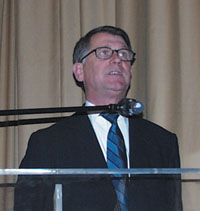 |
| Dag Wilhelmsen, general manager of the NATO Consultation, Command and Control Agency, explains that NATO must standardize the interfaces without dictating the system solutions. |
Nick Witney, director of the European Defense Agency (EDA), part of the European Union’s deepening involvement in defense issues, gave a recorded interview to Claude Roche, AFCEA Paris Chapter president, to conclude the symposium. According to Witney, the EDA is looking hard at C3. National defense industries in Europe, he said, cannot be sustained solely by national requirements. Work needs to be done in a European context, implying a more continental scale of equipment provision will be more economically efficient.
The full content of a number of conference briefs is available through the AFCEA Paris Chapter at www.afceaparis.org.

